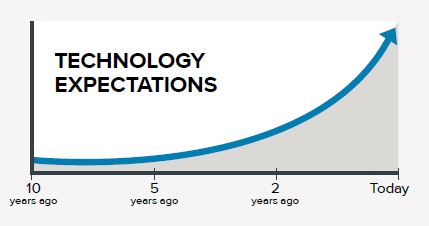Continuous Capability Improvements Have Consequences
 Technology expectations have increased exponentially when compared to ten, five or even two years ago. When something is not keeping up, users get disappointed. This is the consequence of the continuous device and system improvements we have experienced over the past thirty years. These expectations have become a new baseline that we unconsciously apply to every technology-based
Technology expectations have increased exponentially when compared to ten, five or even two years ago. When something is not keeping up, users get disappointed. This is the consequence of the continuous device and system improvements we have experienced over the past thirty years. These expectations have become a new baseline that we unconsciously apply to every technology-based
product, we encounter, from phones to cars… to pretty much every powered device we use. Remember, thermal barcode printers are relative newcomers into the world of smart devices but no less deserving of equal consideration.
Employees with twenty or more years in professional environments increasingly expect these devices to eventually interact in terms of their connectivity, mobile system integration, and intelligence. For those just now entering the workforce, there’s no patience for unconnected, unintelligent devices that don’t interact with mobile systems
At the same time, modern connectivity, mobile integration and device intelligence capabilities have additional consequences when enterprise needs are considered. Greater connectivity brings more opportunities for attack. Mobile device proliferation distributes attack points outside of the enterprise environment, while intelligent devices can be beneficial and risky. When businesses think of devices that require protection and enhanced security, they usually think of smartphones, laptops, tablets, PCs and IoT devices, but seldom include thermal barcode printers, despite the fact that they are often connected to an IT network and are, undoubtedly, indispensable to the everyday operation of many industries. We can’t stress enough that there are no exceptions, all enterprise devices, and the data they convey need to be sent out into the world bound to a well-thought-out set of Enterprise Data & Device Best Practices.